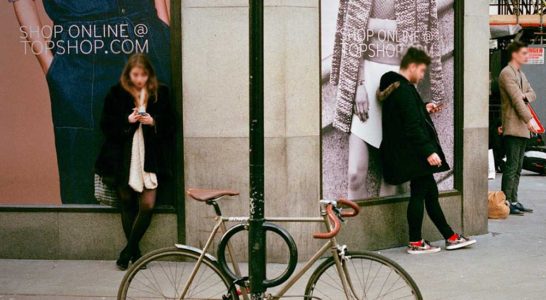Instagram posts as symbolic resources for understandings of the good life
As the consumerist understanding of what living well means is increasingly disputed for its unsustainability, the need emerges to look for alternative takes on the good life. In this blog, CUSP researcher Anastasia Loukianov presents an overview of her recent article with Kate Burningham and Tim Jackson, considering some of the understandings of the good life that can be found on Instagram.

Throughout history, we have always lived on the basis of some understanding of ‘what is a better, more desirable, or worthier way of being in the world’ (Christopher, 1999: 141), continually engaging in the task of defining for ourselves and for each other the nature of the good life. But in this definition process, we are not completely free to choose just anything we want (Elliott & Wattanasuwan, 1998). Rather, we are supported by the shared understandings of the good life that are available through our particular sociocultural and historical contexts, some of which are more conducive to sustainable futures than others.
With the increased participation in digital visual culture across the world (Kress, 2010), understandings of the good life are likely to be created, maintained, modified, and broadcasted through online visual means. Indeed, in recent decades the conditions of production of wide-reaching images have changed. Today, popular platforms enable users to share photographs and videos with millions of others—a privilege that was once reserved to particular actors only. Such platforms are significant in that they provide the means to a bottom-up approach to what living well can mean. The democratisation of the possibility to craft wide-reaching images of the good life suggests that user-generated images of the good life are likely to become a major force in what Goldhaber (1997) calls the attention economy and a new shared resource for meaning creation. Widely circulated user-generated images of the good life can potentially have tremendous impact on common ideas of the good life and are necessarily related to questions of environmental impacts and social justice.
Among image-sharing platforms, Instagram boasts over a billion users (Statista, 2017). We used an existing dataset of Instagram posts created in 2014–2015 by researchers from the Pacific Northwest National Laboratory (USA) and the Pennsylvania State University (USA) to qualitatively explore some of the understandings of the good life that can be encountered on the platform. From our analysis of 150 Instagram posts tagged #goodlife and variants, we derived nine thematic aspects of the good life: fitness and health, entrepreneurship, wealth and luxury items, significant others, self, having fun, travelling, relaxing, and aesthetics. A single post could regroup multiple thematic aspects, highlighting the complexity of good life understandings.
Additionally, we remark that a striking unifying feature of all posts in our sample was their present temporality. This temporality was expressed in captions, photographic style, and hashtags, and oftentimes resulted from a combination of the three. We identified two approaches to the present. In the first one, taken up by the majority of the posts in our sample, the present was valued for itself. In the second one, which constituted a substantial minority of our sample, the present was seen as an opportunity for bringing us closer to our goals. These approaches did not correspond to character types, as the same user could employ one of the other alternatively. However, they were more likely to manifest in relation to particular thematic aspects of the good life. The first approach was more readily employed in relation to spending time with significant others, having fun, and relaxing. Here, the promotion of the enjoyment of each day or moment for itself, reminds us of hedonist approaches to wellbeing. The second approach typically appealed to users when they were engaged in fitness and health activities or in entrepreneurial projects. Through its emphasis on the working process towards the realisation of one’s potential, this approach can perhaps be related to the eudaemonic understanding of wellbeing.
Instagram posts have often been associated with consumerism, a priori curtailing any attempt to seek for socially and ecologically sustainable understandings of the good life on the platform. However, we argue that neither of the two approaches identified above were directly or necessarily congruent with a consumerist good life (as much as they may be problematically related to liberal individualism). The relationship of Instagram posts to sustainable futures is rather more complex. First, we observed that while the posts do not necessarily convey consumerist good lives, they seem to reinforce consumer culture. Indeed, the background presence of material and intangible consumer goods, which to some extent is unavoidable in consumer societies, reinforced their contribution to both forms of good lives. In most cases however, this reinforcing is incidental, which suggests that users value other aspects of life of which consumer goods, in consumer societies, are supportive.
Second, we considered the present-centredness of the posts. We argue that the present temporality is influenced both by the social conventions currently in place on the platform, and by the application’s interface, which ensures that the visibility of Instagram images is only short lived. It is not the first time that researchers remark on the present-centredness of Instagram posts. However, this present-centredness has a particular significance for sustainable futures. In both approaches highlight above, the ‘good’ seemed to be defined in relation to the present, and in either case, did not extent beyond one’s lifetime. Yet, sustainability is necessarily concerned with the long-term future. Do sustainable good life narratives need to offer notions of ‘good’ that span beyond our lifetimes? Opinions will certainly differ on this point. But the temporalities of our narratives, those afforded by the mediums that we use to articulate them, and those of the current social conventions in place on those mediums, affect what we can talk about and how we can talk about it.
These are matters to take into consideration when seeking for spaces of participation in the definition of sustainable understandings of the good life. Certainly, if we are interested in developing understandings of the good life that are both sustainable and democratically upheld, there is a need for spaces in which people can take part in this definition process. We have since attempted to think of Instagram as such a space (with all of the difficulties that this entails!). In a forthcoming article, we conceptualise participation on the platform, and consider the relationship of ‘good’ participation to social and environmental impact. We will develop this line of thought further in a future research log.
Link
- Loukianov A, Burningham K & T Jackson 2019. Living the Good Life on Instagram: An exploration of lay understanding of what it means to live well. Journal of Consumer Ethics. (Retrieved from journal.ethicalconsumer.org).
References
- Christopher, J.C. (1999). ‘Situating psychological well-being: exploring the cultural roots of its theory and research’. Journal of Counselling & Development, 77: 141-152
- Elliott, R. and Wattanasuwan, K. (1998). ‘Consumption and the symbolic project of the self’, Englis, B.G. and Olofsson, A. (eds) European Advances in Consumer Research, 17-20. Provo, UT: Association for Consumer Research.
- Goldhaber M. (1997). ‘The Attention Economy and the Net’, First Monday, 2(4). Accessed 24/04/2018: http://firstmonday.org/ojs/index.php/fm/article/view/519/440/
- Instagram, TechCrunch. n.d. Number of monthly active Instagram users from January 2013 to September 2017 (in millions). Accessed 24/04/2018: https://www.statista.com/statistics/253577/number-of-monthly-active-instagram-users/
- Kress, G. (2010). Multimodality: A Social Semiotic Approach to Contemporary Communication. London: Routledge



